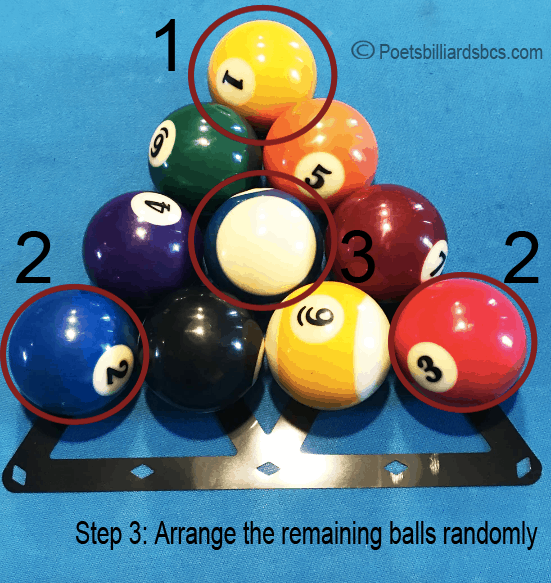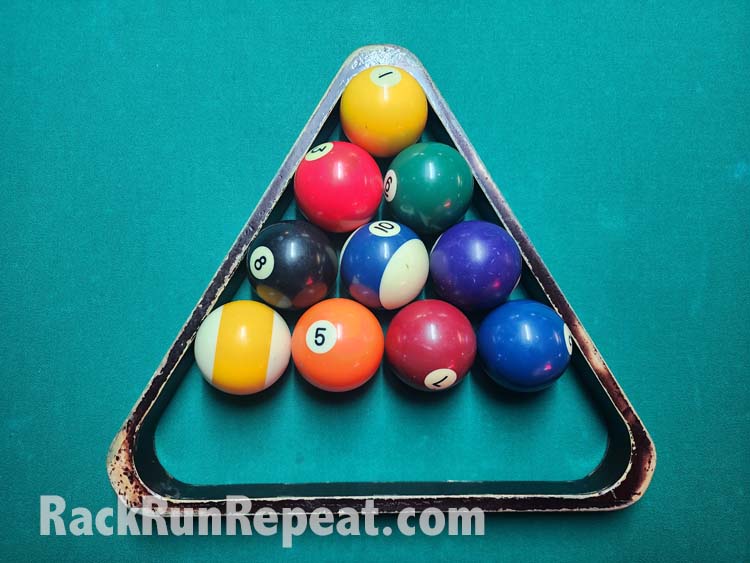Is mastering the intricacies of a perfect 10-ball rack the key to unlocking a new level of competitive pool? The precision in racking, the strategic break, and the ability to navigate the table with ascending numerical order are the hallmarks of a skilled 10-ball player.
The art of 10-ball pool, a game of strategy and skill, often begins with a seemingly simple, yet crucial, task: the rack. It's a step that determines the initial layout and, consequently, the entire flow of the game. The objective is straightforward: to pocket the ten object balls in ascending numerical order, from 1 to 10. However, the path to victory is paved with nuanced techniques, rules, and a deep understanding of ball positioning. The challenge lies not only in hitting the balls but in setting up future shots, a chess game played on a felt battlefield.
Before delving into the specifics, it's worth noting that the fundamentals of 10-ball are significantly influenced by how the balls are arranged before the break. The standard setup involves a triangle, with the 1 ball at the apex, positioned directly on the foot spot, and the 10 ball placed in the center. The remaining balls are arranged randomly, with their order dictated by the player or league's specific regulations. This randomness adds an element of unpredictability to the game, as the break can drastically alter the table's arrangement.
The US Open 10-Ball tournament, known for its high stakes and intense competition, is a prime example. The rules are strict, ensuring that the game stays at its purest. The 2 and 3 balls are often stipulated to be at the "wings" of the rack. This detail isn't merely a formality; it's an aspect of the game that affects the break and the positioning that follows. Players must adapt their strategies to these constraints, emphasizing the critical importance of being adaptable and being able to think on the go.
Lets look at the fundamentals. A proper break shot in 10-ball requires precision. According to the rules, the cue ball begins in hand behind the head string. If no ball is pocketed, at least four object balls must be driven to one or more rails, or the shot is called a foul. This is no easy task. Many professional players spend hours perfecting their break. A well-executed break can scatter the balls, opening up pockets, giving the breaker a distinct advantage. Its a moment of strategic deployment, with the potential to make or break the game. The angles, the force, and the point of contact on the cue ball all play critical roles in this shot, the very foundation of a winning performance.
The 10-ball rack itself is meticulously crafted. The apex of the rack is reserved for the 1 ball, placed precisely on the foot spot. This placement ensures a strategic initial layout. The 10 ball, the most important ball, is in the center of the rack, which gives it a high probability of being hit on the break. The other balls are mixed strategically, making it a challenging layout.
Here is a hypothetical table that illustrates the significance of specific elements in the game:
| Component | Importance | Impact on Game |
|---|---|---|
| Rack Setup (10-Ball) | Critical | Dictates initial ball distribution, influencing break strategy and opening pockets. The position of the 1 and 10 balls can lead to significant opportunities or put the breaker at a disadvantage. |
| Break Shot Technique | High | Determines how the balls scatter, the likelihood of pocketing a ball on the break, and the safety options available. A good break creates a favorable table situation. |
| Shot Selection | High | Choosing the right ball to hit next, and the right path to get it in the pocket. This is critical for the game's flow. |
| Cue Ball Control | High | Moving the white ball to gain an advantage and opening up the pocket for the next ball. A key element in positioning for the next shot. |
| Ascending Order | Mandatory Rule | The player must hit the balls in order from 1 to 10. Players have to plan ahead to get the best positioning for the upcoming shots. |
| Foul Rules | Determining factor | Can cost the player their turn or give their opponent ball in hand. This directly influences game dynamics. |
The gameplay in 10-ball is, in essence, a sequence of strategic decisions. After the break, players must navigate the table, pocketing balls in ascending numerical order. This seemingly simple rule demands precision, strategic thinking, and a thorough understanding of angles and ball control. For instance, accidentally cutting the 1 ball more than 5 degrees in either direction could be a significant error, as it might disrupt the desired flow of the game or create undesirable positioning for the subsequent shots.
League play often introduces additional strategic considerations. The option to use the lowest available nine balls in each game, for example, can be a cost-saving measure during league nights. This reduces the need to replace balls, saving money for the teams. The breaker may make this request, adding another layer of strategy to the game.
The rules are designed to add another layer of complexity to the game, the more important the rules, the more strategic decisions a player has to make. Precision in racking, strategic break, and the ability to shoot in ascending numerical order are essential elements. Mastering this art can unlock a new level of competitive pool.
Ultimately, success in 10-ball is a blend of technical skill, strategic foresight, and a touch of luck. The best players are those who can control the cue ball, anticipate their opponent's moves, and adapt their game to the ever-changing dynamics of the table.
The next time you approach a pool table, remember the key elements, and start with a perfect rack. Consider every shot, prepare for the break, and focus on your ball control. This will maximize your chances of success. Good luck, and may the angles always be in your favor!



Detail Author:
- Name : Ephraim Jerde
- Email : rowe.lupe@hotmail.com
- Birthdate : 1974-10-02
- Address : 767 Beau Burgs Apt. 031 Nitzscheside, OR 70955-5781
- Phone : +16306329782
- Company : Hartmann, Dooley and Tillman
- Job : Operations Research Analyst
- Bio : Eos reiciendis asperiores aliquid omnis nobis veritatis ut occaecati. Dolorum animi repellendus quod dicta corrupti tempore est et. Quasi et consequatur consequuntur labore sit est.